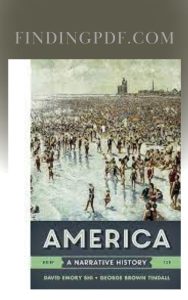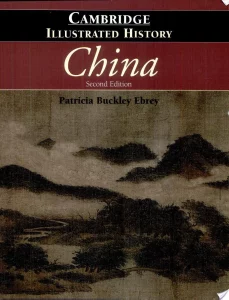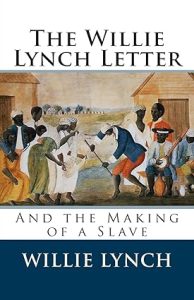
Books Title: “Art History volume 1, sixth edition” PDF Free Download

“Art History volume 1, sixth edition” is an interesting and catchy book. It is circle around the pictorial representation of art and history of various eras. This book was originally published in 2013 by Pearson. It is having total 657 pages. By genera it belongs to the category of art history book.
Books Author: “Marilyn Stokstads”

“Marilyn Stokstads” was an American art historian, educator and author. She was born in Feb 16, 1929 in Lansing, Michigan, United States. Her most of the famous book are as: “Art History”, “Art History Vol 1” and “Art History: A View of the World”. She was died in March 04, 2016.
Introduction to “Art History volume 1, sixth edition”
“Art History volume 1, sixth edition” is an inyersting book and Art is a form of academia which is practiced for quite a long time now. It has always inspired people to work up on their creative side. Its origin roots back into long history. Marilyn Stokstads wrote this book to display a timeline of the history of art. This is the sixth edition of the series of books. This book has a pictorial representation on art of various eras. The changing perspective of people to art made it diverse and fascinating.
Art is not the same as it used to be some years back. It has been constantly changing. This book of art history gives us a detailed overview of the history. It gives us details on oldest forms of art which gradually changed into present day paintings, sculptures and many more. The types of different artistic abilities have changed. New forms of art are added with passing time.
Summary of “Art History volume 1, sixth edition”
The book, “Art History volume 1, sixth edition” starts off with ancient art. In the prehistoric times how people used to do art. The old paintings of Lascaux are given in the book, presenting the specific form of cave paintings. Apart from these, Altamira’s art is also part of this chapter. It dives into the artistic models of ancient times. This chapter emphasizes the lives of people who lived at that time. Their culture and way of life is depicted through the paintings and sculptures. It was a way of presenting their daily life events. This also tells about how people can communicate for many years after just a piece of painting.
Along the timeline, the book moves a few years forward, to a new world of art. Ancient Near Eastern Art is also well known. Persian art has always been a center of attraction. It gives a clear picture on the history of Persia. The art of Mesopotamia is also mentioned in this part of the book. Architecture related to monuments is part of this timeline. Another famous part of ancient eastern art is cuneiform writing. This time of history of art was a lot inclined towards religion. Sculptures of gods and paintings of people during prayers are part of the book. The political situation of the era is also portrayed.
Egyptian art has a chapter on it in the book. The famous pyramids of Egypt are there. It also gives a brief knowledge on the religious beliefs of people in ancient Egypt. The way dead people are buried in that time is also focused on in the paintings. This chapter discusses how these art pieces conveyed the information about ancient Egypt. Another chapter is on the Aegean Art. This form of art presents the civilizations of that time. The Minoans are one of them. It is mostly focused on pottery making. Another example of Aegean art is the architecture of Knossos. The relation between society and these pieces is given in the book.
Greek art has always been fascinating. This time period includes pottery making mostly. Sculptures are a significant part of Greek civilization. The making of sculptures have changed over time. Olympic Games are also depicted in this part of the book along with democratic rights given to people. Moving forward the Romanian art together with Etruscan is presented. It has a new inclusion of engineering to the sculptures. The changes in expression of art when the Republic converted to Empire is shown.
After the Romans, art was mainly composed of Christian beliefs. This time period in art history has mostly the paintings of Christian catacomb or their iconography. This chapter is Late Antiquity. The Christian art then combines with Byzantine art. There is a deep connection of art to religion.
The Islamic art represents the cultural and religious beliefs of Muslims. It introduced a whole other world of calligraphy. The calligraphic presentation of holy verses is a significant part of this art. Geometry also has a role to play in it. This art revolved around decorating museums and mosques with quranic verses in beautiful patterns and designs. Culture was also the center of attention.
Romanesque art was one of its types. It brought a great change to the world of architecture. Their pieces were unique and innovative. It presented society in a different way. The monks and their monasteries are part of the book. The hierarchy in the society at the time was also addressed in paintings. The Gothic period has a chapter in this edition. It is the time of education taking over the artistic world. Various creative art is part of this chapter like beautiful patterns were drawn on windows. This period shows the introduction of universities and its impacts on art.
Writing Style
Marilyn Stokstad ways of writing in his book “Art History volume 1, sixth edition” is very easy to understand and approach. She explains in-depth themes including the diversity of art, the influence of art, role of women in art and the feature of art in an accurate manner. She uses simple but detailed words and sentences with the aim to balance the pace of the story. She encourages the readers to think critically and come up with their views about the future of this book.
Marilyn Stokstad avoids to use complex vocabularies and irrelevant idioms with the rest of the story. She defines complex but well-developed and well-organized characters that looks like real and trustful. She also include many of real and life related examples that can accelerate the interest level of all kind of readers with the rest of the world. Marilyn Stokstad placed plots, storylines and opening and closing points in an accurate and concise way for the sake of convey his core ideas and messages in a simple and easy way.
Major Receptions
“Art History volume 1, sixth edition” had received mostly positive comments from its readers since its publication. It has been praised for its comprehensive coverage of the subjects, its engaging and simple writing style and rich content. This book was nominated on the American Library Association Notable Books List 2014 and it also received the choice Outstanding Academic Title Award of 2014. It has been sold 1 million copies and it has also been translated into 15 various languages worldwide.
Conclusion of “Art History volume 1, sixth edition”
This book is for people interested in how art changed over time. Nothing is static in this developing world. People change with time and their beliefs change with them. Transformation in culture and rituals is also seen. As art is the visual representation of lives of people, it is the framework on which religion and culture is painted. Sculptures are made and preserved overtime.
It is mentioned in the book that there is a connection between art and society. Religion and culture has a great role to play in the development of architecture. Artists should see how history is virtually presented to the world through beautiful forms of architecture. This book is suitable for adults and mature readers. I highly recommended this book to all of them who love to read Art History books.
FAQs
Q: What is the book “Art History volume 1, sixth edition” is about?
“Art History volume 1, sixth edition” is an interesting and catchy book. It is circle around the pictorial representation of art and history of various eras.
Q: is this book good for kids?
This book is suitable for young adults and mature readers.
Q: what is the genre of “Art History volume 1, sixth edition”?
It belongs to the category of Art History books.
Q: How many pages does it have?
It contains total 657 pages.
Q: Who is the author of “Art History volume 1, sixth edition”?
“Marilyn Stokstads”.
Q: Did this book won any award?
Yes it won the Outstanding Academic Title Award of 2014.
Q: Who is the publisher of “Art History volume 1, sixth edition”?
The Pearson is the publisher of this book.
Q: What is the historical function of art?
To tell stories, to help people worship their God, and to increase personal enjoyment.
What are the 7 functions of arts?
The seven fictions of art are as:
Remembering, Hope, Sorrow, Rebalancing, Self-Understanding, Growth and Appreciation.
What Are the Functions of Art?
Context, Personal, social, and Physical functions.
What are the cultural functions of art?
To help develop the mind and body, refine feelings, and thoughts and reflect and represent our customs and values as a society.
 Similar eBooks
Similar eBooks





